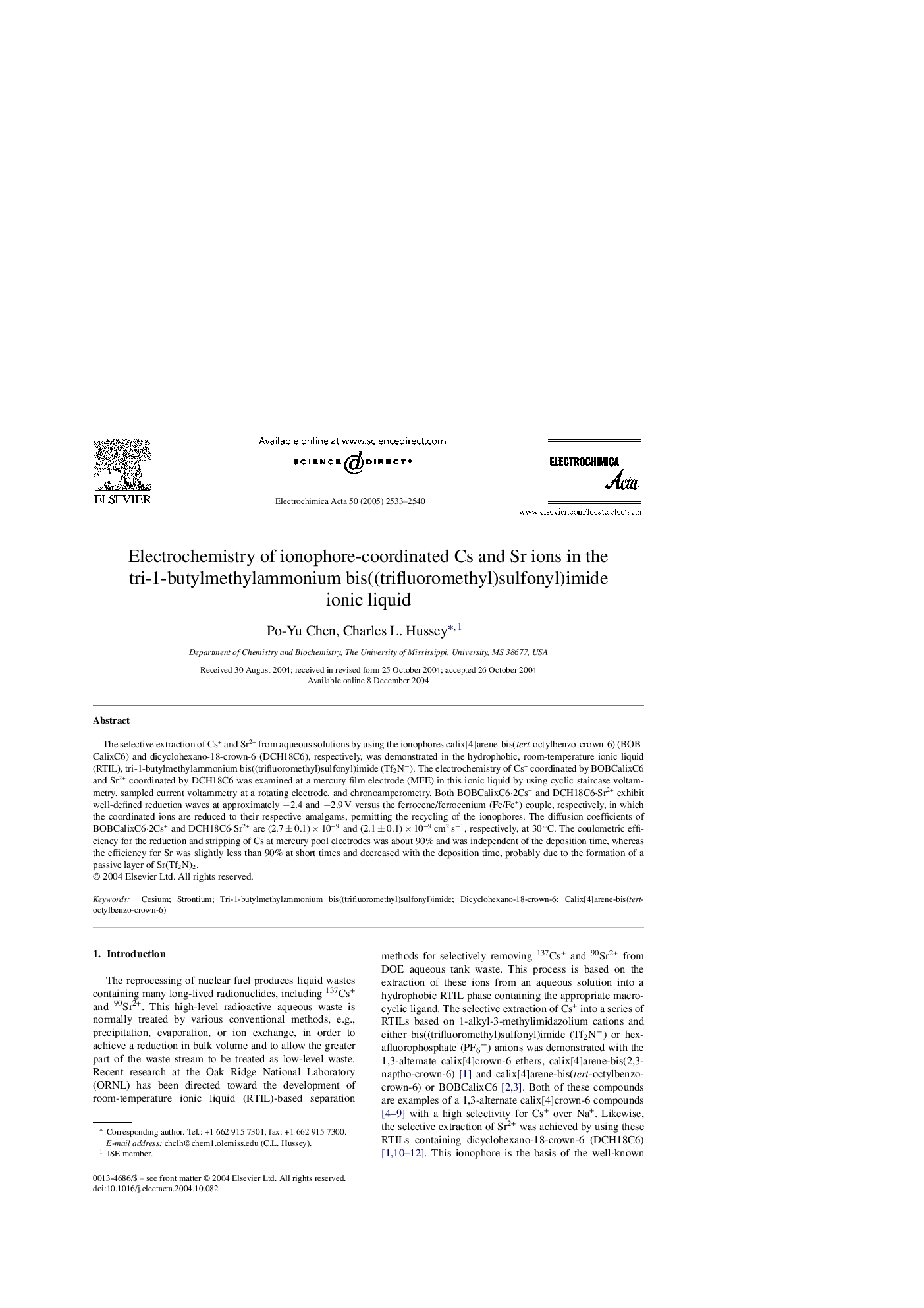| Article ID | Journal | Published Year | Pages | File Type |
|---|---|---|---|---|
| 196813 | Electrochimica Acta | 2005 | 8 Pages |
The selective extraction of Cs+ and Sr2+ from aqueous solutions by using the ionophores calix[4]arene-bis(tert-octylbenzo-crown-6) (BOBCalixC6) and dicyclohexano-18-crown-6 (DCH18C6), respectively, was demonstrated in the hydrophobic, room-temperature ionic liquid (RTIL), tri-1-butylmethylammonium bis((trifluoromethyl)sulfonyl)imide (Tf2N−). The electrochemistry of Cs+ coordinated by BOBCalixC6 and Sr2+ coordinated by DCH18C6 was examined at a mercury film electrode (MFE) in this ionic liquid by using cyclic staircase voltammetry, sampled current voltammetry at a rotating electrode, and chronoamperometry. Both BOBCalixC6·2Cs+ and DCH18C6·Sr2+ exhibit well-defined reduction waves at approximately −2.4 and −2.9 V versus the ferrocene/ferrocenium (Fc/Fc+) couple, respectively, in which the coordinated ions are reduced to their respective amalgams, permitting the recycling of the ionophores. The diffusion coefficients of BOBCalixC6·2Cs+ and DCH18C6·Sr2+ are (2.7 ± 0.1) × 10−9 and (2.1 ± 0.1) × 10−9 cm2 s−1, respectively, at 30 °C. The coulometric efficiency for the reduction and stripping of Cs at mercury pool electrodes was about 90% and was independent of the deposition time, whereas the efficiency for Sr was slightly less than 90% at short times and decreased with the deposition time, probably due to the formation of a passive layer of Sr(Tf2N)2.
